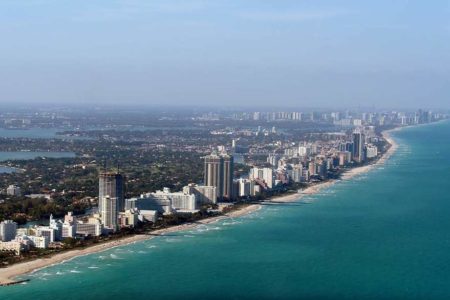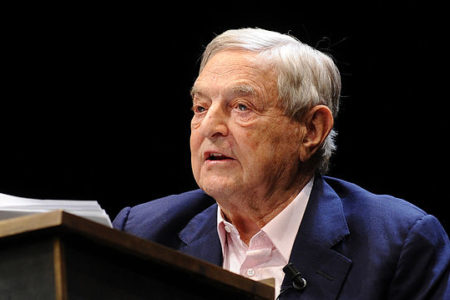
The critics of President Trump’s Iran policy have been proven wrong once again: Not only have the US sanctions imposed significant pressure on the ruling mullahs of Iran and their ability to fund their terror groups, but in addition, President Trump recently ordered a game-changing military attack that killed both Iranian Major-General Qassem Soleimani, head of the elite Quds Force, and Iraqi militia commander Abu Mahdi al-Muhandis near the Baghdad airport.
According to the US Department of Defense, Soleimani “was actively developing plans to attack American diplomats and service members in Iraq and throughout the region.”
The unexpected death of Soleimani should be regarded as a severe blow to the ruling mullahs. When it comes to authority in the Islamic Republic, Soleimani was considered Iran’s second man after Supreme Leader Ayatollah Ali Khamenei.
A staunchly loyal confidante to Khamenei, Soleimani enjoyed enormous influence over dictating the Iranian regime’s foreign policy. Soleimani was not bragging when he wrote in a message to US Gen. David Petraeus:
“… you should know that I, Qassem Suleimani, control the policy for Iran with respect to Iraq, Lebanon, Gaza, and Afghanistan. And indeed, the ambassador in Baghdad is a Quds Force member. The individual who’s going to replace him is a Quds Force member.”
Soleimani was appointed by Iran’s Supreme Leader to be the head of the Quds Force, a branch of Iran’s Islamic Revolutionary Guard Corps (IRGC), almost two decades ago. The Quds Force is tasked with exporting Iran’s ideological, religious and revolutionary principles beyond the country’s borders.
As the leader of the Quds Force, Soleimani was in charge of extraterritorial operations, including organizing, supporting, training, arming and financing predominantly Shiite militia groups; launching wars directly or indirectly via these proxies; fomenting unrest in other nations to advance Iran’s ideological and hegemonic interests; attacking and invading cities and countries; and assassinating foreign political figures and powerful Iranian dissidents worldwide.
The Quds Force fomented unrest in Iraq by providing deadly, sophisticated bombs, including improvised explosive devices (IEDs) that killed many civilians and non-civilians, including Iraqis and Americans.
Under his leadership, the Quds Force was also accused of failed plans to bomb the Saudi and Israeli embassies in the US, and to assassinate then-Saudi Ambassador to the US Adel Al-Jubeir. An investigation revealed that the Quds Force was also behind the assassination of Lebanon’s Sunni Prime Minister Rafiq Hariri.
Soleimani also successfully made alliances with various terror and militia groups including non-Shiite terrorist groups such as Al-Qaeda. Under Soleimani’s rule, Iran’s military was also implicated in the 9/11 attacks. US Federal Judge George Daniels issued an order stating that Iran, its Lebanese Shiite proxy Hezbollah and Al-Qaeda were jointly responsible for the attacks.
Iran provided “safe harbor for some Al-Qaeda leaders. The (Quds) Force’s senior leaders have longstanding ties to Al-Qaeda, and since the fall of Afghanistan, have provided some Al-Qaeda leaders with travel documents and safe haven” said a European intelligence analyst.
Christopher Harmer, a retired U.S. Navy Commander, told The New York Times that Soleimani is “a more stately version of Osama Bin Laden.”
Soleimani was also well-known as the Middle East’s deadliest, and Iran’s most dangerous, man. He prioritized offensive tactics and operations over defensive ones, and rejoiced in taking selfies with his troops and proxies in battlefields in countries, including Syria, Yemen, Lebanon and Iraq. He was previously sanctioned by the US, Switzerland and the UN Security Council via Resolution 1747, and on America’s Specially Designated Global Terrorists list.
He commanded roughly 20,000 Quds Force members, and in case of emergencies, could also deploy forces from the IRGC and Basij militia. Soleimani commanded fighters from militias that Iran supports and helped create, and hired fighters from other countries, including Afghanistan, to fight as proxies.
Soleimani’s modus operandi was anchored in creating instability in other nations in order to advance Tehran’s interests. He once declared that the unrest and uprisings in the Middle East and North Africa “provide our (Iran’s) revolution with the greatest opportunities…”
“Today, Iran’s victory or defeat no longer takes place in Mehran and Khorramshahr. Our boundaries have expanded, and we must witness victory in Egypt, Iraq, Lebanon and Syria. This is the fruit of the Islamic revolution.”
The Iranian government’s hatred towards the US often seems the most important reason for its existence. As long as the ruling mullahs remain in power, the Islamic Republic will continue its acts of terror and deep antagonism against Americans, their Sunni neighbors, the lands they try to control — such as Iraq, Syria, Yemen, Lebanon, parts of Gaza and Venezuela — and the West.
Thanks to President Donald J. Trump, the US inflicted another significant blow to the anti-Semitic and anti-American regime of Iran. Moreover, to the likely dismay of Washington’s critics, President Trump’s Iran policy has been heading in the right direction. Maximum pressure is the right policy to bridle this predatory regime.






Recent Comments